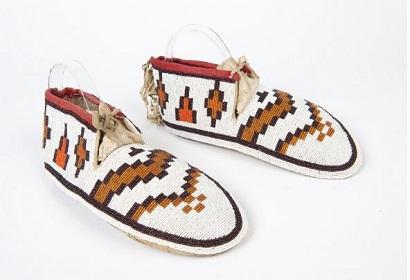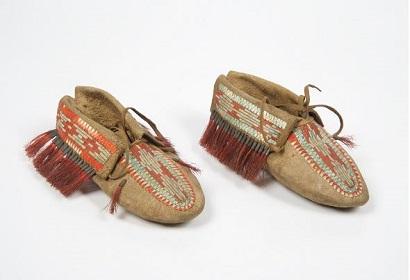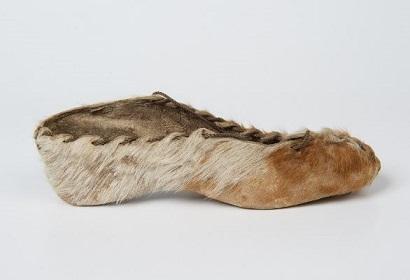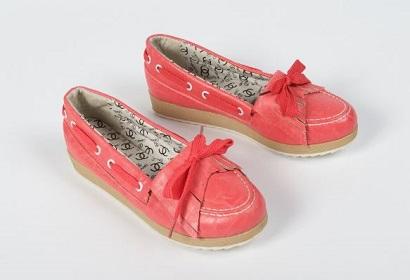Record details
| Shoe style | Moccasin |
|---|---|

|
|
| Style description |
A moccasin has a soft sole and upper often made from one piece of leather. It was originally the traditional footwear of Native North America. |
| Shoe description | This beaded pair are North American Plains Cree moccasins, 19th century. The Cree are the alrgest group of First Nations Canada. |
| Style example 1 | Pair of American Iroquois children's suede moccasins decorated with porcipine quills, about 1780. The Iroqious are First Nations America and originally lived near Lake Ontario and along the Mohawk River in New York State. |

|
|
| Traditionally moccasins were decorated with porcupine quills. Porcupine quills only occurred in certain areas of North America and so were acquired though trade across tribal areas. Into these local trade networks European settlers introduced beads in the late 18th century. | |
| Style example 2 | Pampootie made from untanned cow hide. From the Isle of Aranmore, Galway Bay, Ireland. 1850. |

|
|
|
This shoe is made from a single piece of hide and is known as a pampootie. It is similar in style to the Scottish rivelin and to the earliest leather shoe ever found, which was discovered in Armenia. That shoe dates to 5800 BC and is a moccasin-like style laced along the seams at the front and back, with a leather cord to pull it tight. |
|
| Style example 3 | Women's synthetic moccasin / deck style shoes. Fake Chanel. 2012. |

|
|
|
A modern version of the moccasin style is the deck or boat shoes like this pair form 2012. First invented in America in 1935 by keen boater Paul Sperry, he was worried about slipping on deck, so he cut grooves in his shoe soles inspired by his dog's ability to grip on ice. |
